Only fourteen years ago, as the Berlin Wall fell, the world applauded as the threat of global annihilation and weapons of mass destruction (WMD) were just a fading nightmare that had been vanquished. Insidiously, while the attention of the world focused on the superpowers on centre stage, more sinister dangers were growing in the shadows of our global theatre. Unrecognized players have stepped into the leading roles of a real-world drama. Sounding like a fictional suspense drama, it actual describes the real nuclear, biological and/or chemical (NBC) concerns armed forces face today. To sufficiently tackle such a multi-facet threat the ability to reliably and quickly detect toxic substances and warfare agents, even under difficult battlefield conditions, has become increasingly important, and this capability will be equally important in future. At the focal point of this article is the, in Germany by Rheinmetall Landsysteme (RLS, a subsidiary of Rheinmetall DeTec) developed, Fuchs 2 (German for Fox) NBC reconnaissance system (RS) in its new and updated version.
Manoeuvrability: Today the armoured 6×6 wheeled detecting vehicle (Spürpanzer) Fuchs NBC-RS is known as the most advanced and effective front line tried-and-tested system of its kind. It is proven in numerous crisis regions around the globe and has received big international appreciation. Of the more than 1,200 vehicles built thus far, more than 260 are in use as NBC-RS in the armies of the UK, Germany, the US, the Netherlands, the Kingdom of Saudi Arabia, Norway and since recent the United Arab Emirates (UAE). This makes it the most widely used vehicle in its class. One of the remarkable features of the NBC-RS is that it can keep up with manoeuvre forces due to his high manoeuvrability on the road (105 Km/h) and in the field. With its operational range of about 800 Km and when its amphibious features is put in use its swimming speed is 10 Km/h, the vehicle can be used to detect and measure warfare agents even under extremely difficult conditions.
The primary mission of the Fuchs NBC-RS is to detect, identify, mark, sample and report chemical, biological and radiological contamination on the battlefield, and to provide information to units on the ground. All of this while being on the move. This rolling laboratory can collect soil, water, and vegetation samples and immediately analyze them. They can also mark areas of contamination, and transmit with the aid of tactical and long-range communications equipment, in real time, NBC information.
Mid-life Improvements: To adapt the system to changed requirements, RLS is currently improving the NBC-RS Suite of the British and Dutch vehicles furthermore. Hereby the Dutch variant is almost identical with the UK variant. Among others the existing radiological device is being replaced by a modern one (with two external sensors) to expand the measurement ranges of the device itself. In detail, this is a nuclear detector device capable of sensing high doses of nuclear gamma radiation with the aid of the two external sensors mounted on the vehicle exterior. A further unit is provided for the exact measurement of low gamma doses down to the level of natural background radiation. A third detector for measurement of alpha and beta radiation is e.g. used to search for traces of depleted uranium. Each crew member wears additionally a personal alarm dosimeter to register the amount of radiation absorbed.
Further a weather station is mounted on top of a mast to perform permanent air surveillance in order to detect volatile chemical agents. Meteorological data like wind direction and speed, air and ground temperature, air pressure and humidity can likewise be measured. By contrast, warfare agents of low volatility adhering to the ground are detected by a with silicon rubber coated double-wheel sampling system. Rollers collect the agents when the vehicle is travelling and transport them to a heated probe. At the heart of the NBC-RS sits the number-crunching MM1, a mass spectrometer capable of breaking down evaporating complex chemicals and agents into their constituent parts. The usual suspects include sarin, soman, mustard, lewisite and cyclosarin. The entire analysis process is controlled with the aid of an on-board computer. Microsoft compatible hardware with a comprehensive software package, permits identification of a broad range of warfare agents and other dangerous substances. The NBC prediction software enables the detailed analysis of the data of NBC warfare agents, hazardous substances and weather. By using suitable methods of calculation, it permits the prediction of the distribution of harmful substances and warfare agents. The results are presented in various formats by means of digital maps. The use of tactical symbols as well as the making of NBC reports is done in accordance with NATO standards ATP45 (B) and are automatically converted into standardized NBC messages. Within moments, these systems will send data through the tactical Internet to command operations centers for automated processing and relay precise, nearly instantaneous NBC hazard-zone predictions back to the affected forces in the field.
Another field of application of the software are so-called “ROTA” events (Release Other Than Attack), such as leakages in nuclear power stations or other nuclear factories, damages on radioactive or toxic storage material or accidents in the chemical industry. On the other hand, the prediction of radioactive fallout after the detonation of a nuclear weapon according to the DNAF model is also possible. In addition, the algorithms can be used for the calculation of the contamination after an attack by chemical weapons. To improve the detection sensitivity even further, specimen material can be enriched in collector containers. At the same time these reference samples can also be taken for later analysis in a special NBC laboratory. These extensive automation of measurement processes, integrated in the Fuchs, assists the crew in performing its tasks even under stress.
The measuring system allows detection, evaluation, archiving and visualization of radiological and chemical data in connection with the local position coordinates. For this the vehicle is equipped with a civil navigation system for use as street navigation in urban areas and a GPS receiver (AN/PSN-11 PLGR), which continuously supply exact position data.
The crew can perform reliably protected all of its tasks inside the vehicle. The crew is well protected by the vehicle’s collective protection and positive overpressure system as well as an heating and cooling (Climate-Control) system. During vehicle operations, there is no need for the crew to wear chemical protective gear or masks. They can work in their shirt sleeves, that’s a pretty attractive option in a desert climate such like in Afghanistan or Iraq.
Both, British and Dutch variants now boast super-sensitive sensor equipment capable of spotting a wide range of poisons, the latest weather station and weather mast kit, cutting-edge computer hardware and software and a winch so the vehicle can pull itself out of trouble. These ‘mid-life improvements’ will extend the life of these vehicles by at least another 15 years. As part of the British upgrade, their Fuchs simulator will also be completely refurbished to enable training to be carried out on an exact replica of the revamped vehicle, allowing easy instructor supervision of the trainees. It also offers the crew the ability to carry out realistic training in barracks, not only of the vehicle operating functions, but of the detection suite, using simulant agents.
Biological: Although referred to as an NBC-RS, the British and Dutch variants are not (yet) capable of detecting biological warfare agents. The different classes of biological agents (bacteria, virus, toxins) require special analysis processes involving lab work with sophisticated equipment. For this there is a variant in use primarily developed for that purpose, the Fuchs biological reconnaissance system. This vehicle permanently monitors the external air to detect any rise in the concentration of particles in a range which is significant for biological agents, and also detects characteristic biological molecules in the vehicle surroundings. As soon as irregularities are determined, samples are taken from the environmental air and passed to the vehicle interior for analysis. The BIO vehicle is equipped with a totally sealed analysis chamber known as the microbiological isolator, which has glove ports and permits the operator to work completely separated from the infectious material. The identification of any biological agents is carried out on the basis of genetic and immunological methods.
However, in March the UAE has ordered 32 Fuchs 2 NBC-RS vehicles. The UAE version of the Fuchs NBC-RS will featuring, additionally to the above mentioned improved combat value pack, newly developed equipment for detecting bio weapons. For the first time, the NBC-RS vehicle will include a biological laboratory where weapons based on viruses, bacteria, toxins and other biological substances can be analyzed and identified. Modern processes (e.g. ELISA, PCR, GC/MS or HPLC) can be employed to verify the existence of such agents in case of a biological (aerosol) attack. The system can be easily upgraded or modified to identify other additional agents, based on changes in threat conditions. Its new subsystems, such as the chemical and biological mass spectrometer, will improve the detection and identification of liquid chemical agents while providing a first time biological agent detection capability to the reconnaissance platform. This will significantly enhance the capabilities of the latest member of the Fuchs NBC-RS.
Reputation: The Fuchs NBC-RS has the reputation to be the only armoured vehicle capable of carrying out chemical, biological and nuclear surveys at the forward edge of the battle area. Ongoing upgrades of high-precision systems for the rapid detection and identification of current and potential NBC threats should ensure that the Fuchs NBC-RS remains a match for the unpredictable threats that can arise during multinational peacekeeping and peace enforcement operations.
The Fuchs NBC-RS vehicle will form thereby a key part of all-encompassing Force Protection concept. It enables units to operate without suffering the operational impairment caused by individual or collective protection measures, as well as avoiding the expenditure of time, labour and logistics capacity on intensive decontamination operations.



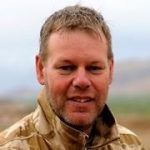
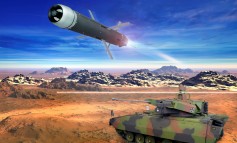
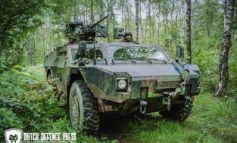
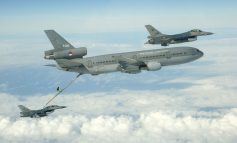
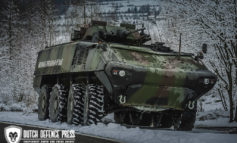
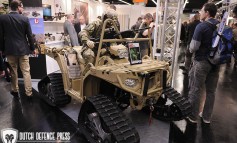
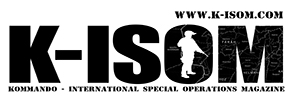
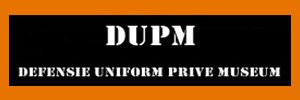
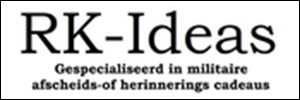
Leave a Reply